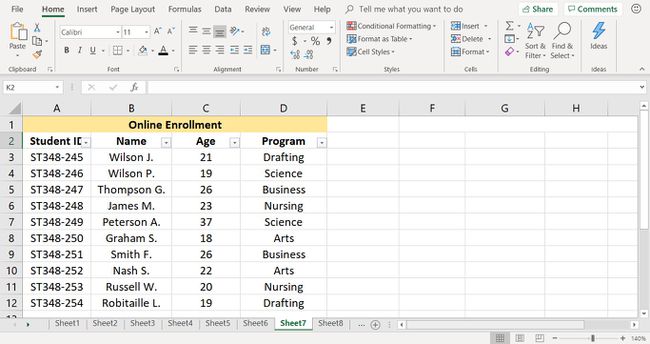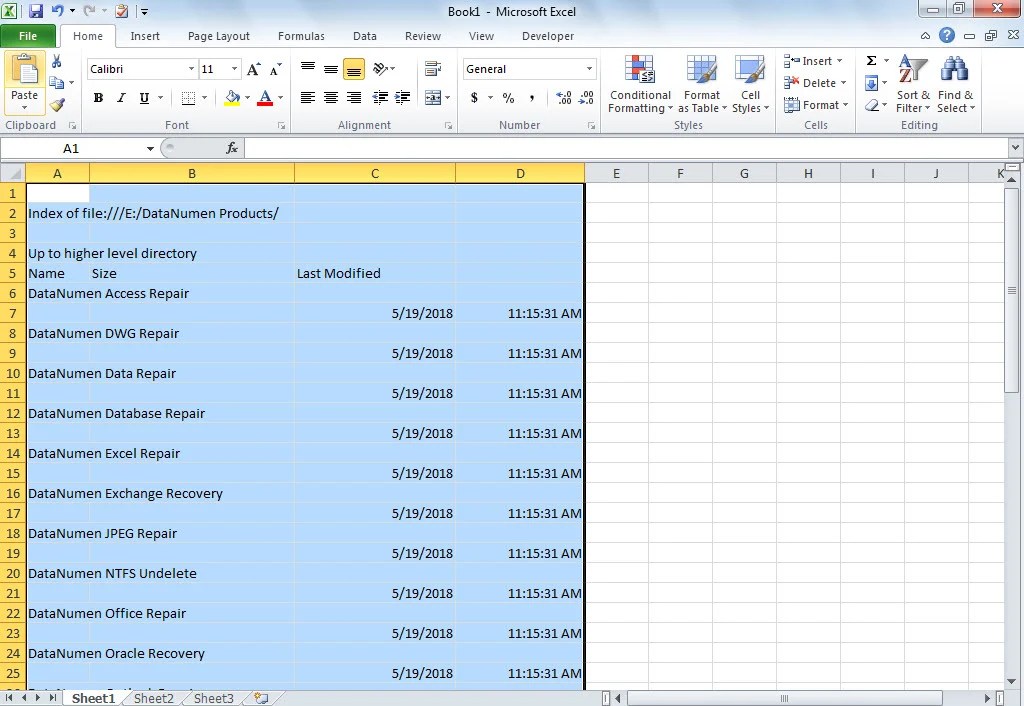5 Ways to Generate Excel Sheets from Text Files

Managing data efficiently often requires the ability to convert information from text files to more user-friendly and commonly used formats like Excel. Text files serve as an excellent data storage medium, especially for large datasets, but Excel spreadsheets offer advanced features for data analysis, organization, and visualization which are necessary for many professional settings. Let's explore five practical methods to transform your text files into Excel spreadsheets seamlessly.
1. Using Excel’s Text Import Wizard

Excel comes equipped with an in-built feature that simplifies the conversion of text files into spreadsheets:
- Open Excel and select “File” > “Open” > “Browse”.
- In the “File type” dropdown, choose “Text files (*.prn, *.txt, *.csv)”.
- Select your text file and click “Open” to start the Text Import Wizard.
- Follow the wizard through these steps:
- Choose the original data type (Delimited or Fixed width).
- Set up delimiters like tab, space, or commas.
- Preview the data and adjust column data types if necessary.
📝 Note: This method works best for straightforward text files and can be less efficient with complex data structures.
2. Command Line Conversions

For users comfortable with coding or script-based solutions:
- Convert CSV to Excel using PowerShell:
Import-Csv -Path “YourFile.txt” | Export-Excel -Path “Output.xlsx” -WorksheetName “Data”
import pandas as pd
data = pd.read_csv(‘YourFile.txt’, sep=‘[delimiter]’, header=None) data.to_excel(‘Output.xlsx’, index=False)
🧑💻 Note: These command-line methods require familiarity with coding environments and specific libraries.
3. Online Conversion Services

When local solutions aren’t viable, online tools can be a quick fix:
- Navigate to a trustworthy online converter like Convertio or Zamzar.
- Upload your text file.
- Select “XLS” or “XLSX” as the output format and begin conversion.
- Download the converted file, ensuring to keep a backup of your original data.
4. Using Open Source Tools

LibreOffice Calc offers an open-source alternative for converting text to Excel:
- Open LibreOffice Calc and select “File” > “Open” > “Text File”.
- Choose your text file and navigate through the Text Import Assistant.
- After importing, save as Excel format by choosing “File” > “Save As” > “Microsoft Excel (XLSX)”.
🌐 Note: Be aware of the compatibility issues with proprietary file formats.
5. Custom Scripting with VBA

Excel’s VBA allows for powerful, customized conversions:
- Open Excel, press Alt + F11 to open the VBA editor.
- Create a new module, paste the following script:
Sub ImportTextFile()
Dim MyFileName As String, LineTxt As String, i As Integer
MyFileName = Application.GetOpenFilename(“Text Files (.txt),.txt”, , “Please Choose a File”)
If MyFileName = “False” Then Exit Sub
Open MyFileName For Input As #1
i = 1
Do While Not EOF(1)
Line Input #1, LineTxt
Cells(i, 1).Value = LineTxt
i = i + 1
Loop
Close #1
End Sub
💻 Note: Users unfamiliar with VBA might find this method challenging.
Each method to generate Excel sheets from text files has its own advantages, suited to different user requirements and technical comfort levels. Whether opting for Excel's own tools, coding, online services, open-source applications, or scripting, these methods allow you to transform plain text into a highly functional spreadsheet format. The choice depends on factors like data complexity, required features, and your access to specific tools or programming environments.
Which method is best for basic text to Excel conversion?

+
The Excel Text Import Wizard is likely the most user-friendly for straightforward conversions. It doesn’t require any coding knowledge, making it ideal for basic needs.
Can I automate text file conversion?

+
Yes, scripting methods like VBA, PowerShell, or Python provide automation capabilities, allowing for bulk conversion or scheduled tasks.
Is it safe to use online conversion tools?

+
Online tools can be safe if you choose reputable services. However, sensitive data should not be uploaded online without due consideration of privacy and security.



